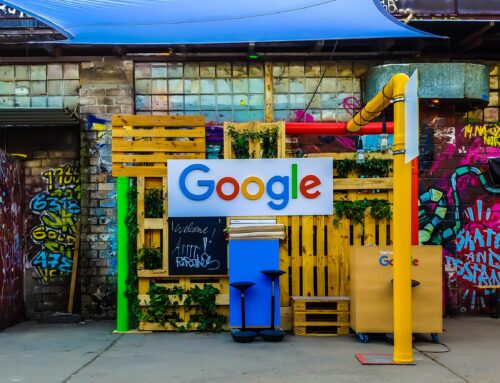SEO (Search Engine Optimization) is a topic that can be mystifying to outsiders, which is why people will often want to use things like these SEO Tips to achieve better results. But both Google and the SEO community have done their utmost to obfuscate the topic, both with a clear material interest in making it seem nearly impossible for “mere mortals.” Google, after all, makes its money on AdWords, and would relish the small business that does not correctly optimize its website, fails to rank at the top of relevant Google searches, and is forced to pay for AdWords. Many SEO consultants and companies also benefit from the confusion, preferring to keep their clients in the dark as opposed to enlightening them. Luckily there are companies similar to SEO A.I. who might be able to help small businesses by shining some SEO light on their issue.

Photo credit: Jordi Payà Canals via Foter.com / CC BY-ND
SEO, in fact, is – like running a marathon – conceptually easy but practically hard. Just run faster, just run harder, and just run longer, and you win. Does that make running a marathon easy? No. But it’s not like building a nuclear reactor, or projecting a spacecraft to Mars. Similarly, SEO has basic elements, like posting High Quality content, that – if followed – will go a long way towards propelling your company, product, service, or personal brand to the top of Google.
On Page SEO: Optimize Your Web Page / Website
On Page SEO is the art and science of structuring your individual web pages and entire website to talk to Google. As your guide here, I highly recommend you download and read the Google SEO Starter Guide. Here are the basic steps for optimizing a web page –
- Define your keyword target. Identify winnable (not too competitive), relevant keywords for your blog post or web page. If, for example, you were a CPA firm and attempting to optimize on a phrase like “FBAR compliance,” you’d want to spend a little time with the Google AdWords Keyword Planner at https://adwords.google.com/ko/KeywordPlanner/. (Note: it requires a paid AdWords account, though you do NOT actually have to spend money). Watch my video on how to use the Keyword Planner on YouTube for tips and tricks. Using that tool, we can identify keywords such as FBAR reporting, FBAR filing, foreign bank account, etc., to “pepper” and “salt” into our blog post or web page. (Another good tool to use is Ubersuggest.io at http://www.ubersuggest.io).
- Create your web page. I recommend using the WordPress platform, if possible, and the Yoast Plugin for WordPress. You should also refer to my SEO HTML template which goes over the primary SEO-friendly tags such as the TITLE, META Description, IMG ALT, and Header at https://www.jasonmcdonald.org/blog/2009/09/seo-page-template/.
- Weave the keywords INTO the key tags, especially the TITLE tag, META description tag, and IMG ALT tags.
- For a good source of royalty-free images, I recommend using Foter at http://foter.com/. I recommend at least one image that has an optimized ALT attribute.
- Write keyword-heavy content. Here the trick is to write with “more” keyword density than “normal” English writing, but not so much as to look ridiculous or trip Google’s Panda penalty. I always say that really well-done SEO content is not visible to the users; a person reading it won’t really notice that you have inserted keywords into strategic tag locations, and written with more density than “normal” English. You want to write FOR Google and FOR humans!
- Cross-link your blog post or web page to/from other key pages. Once you’ve published your page, remember to “link sculpt,” especially linking FROM the home page TO the new blog post, as well as FROM the blog post UP to the key landing pages on your website. Google pays a lot of attention to the whole website, especially the HOME PAGE and the cross links to/from the home page, landing pages, and specific blog posts. You want to stay on your “keyword themes.”
Off Page SEO: Secure Inbound Links
Now that you’ve created some optimized ON PAGE SEO content, it’s time to work on your OFF PAGE SEO. Off Page SEO is largely about INBOUND links. When a website links TO your website, Google counts that as a vote. The more “votes” (links) you have, the more important you are, and that link energy or “link juice” flows into your website / web pages, and helps propel them to the top of Google. To optimize your website, you want to engage in link building. Here’s an excellent reference article on link building from Point Blank SEO.
Here are some easy steps –
- Friends, Family, Colleagues. Inventory EVERYONE you possible know who has a website / blog. Ask them to write something about you, and link FROM their website TO your website or new blog post. “Hey Grandma? I know you are a heavy blogger on the quilting industry, but could you write an awesome blog post about your accountant / FBAR expert / grandson? Thanks Grandma!”
- Directories, Associations, Organizations. Inventory ALL possible organizations that you could belong to, and get a link. For example, I have a nice link from the Authors Guild to my website, as well as other key associations here / near to the Bay Area. These help propel me to the top of Google for relevant searches.
- Bloggers, bloggers, bloggers. ANYONE you ever meet who has a blog is your NEW BEST FRIEND. So ask bloggers for links, or think about proposing a “guest blog” post on their blog. That’s win / win – they get content and you get a back link. Outreach to relevant blogs in your industry by Googling your keywords PLUS blog. A good tool here is the SOLO Seo tool. Tip: if you’re ever solicited by an industry publication, blog, or newsletter, be sure to ask that they link from their article back to your website. Many of us are experts in our field, and this is a very powerful type of link-building.
Become “link aware,” and CONSTANTLY seek and acquire website to link TO your own. These are basic link-building, but read the PointBlank article for even more tips.
Next, turn to other OFF PAGE aspects, especially a) reviews on Google+ and Yelp (if you are a local business). Identify your local listing and claim it on Google My Business and on Yelp at http://biz.yelp.com/. Use a tool like the Google Review Link building and TinyURL to create short links to ask real customers for real reviews. Finally, be sure to claim your social media profiles on Twitter, LinkedIn, Google+, Facebook etc., and optimize those back to your site. Tweet your own URL’s as you post content, and attempt to get others to share them on social media. A good tool to identify influencers is BuzzSumo.
At that point, you have an external link-building machine, going, and you have both ON PAGE SEO and OFF PAGE SEO at work for your personal website, blog, or corporate site. It’s not “easy” in a work sense, but conceptually it’s not rocket science either. Finally, remember: “You don’t have to run faster than the bear, just faster than your buddy,” meaning you’re not usually competiting against the titans of SEO, but rather against other people or companies that are just like you.
Photo credit: Jordi Payà Canals via Foter.com / CC BY-ND


